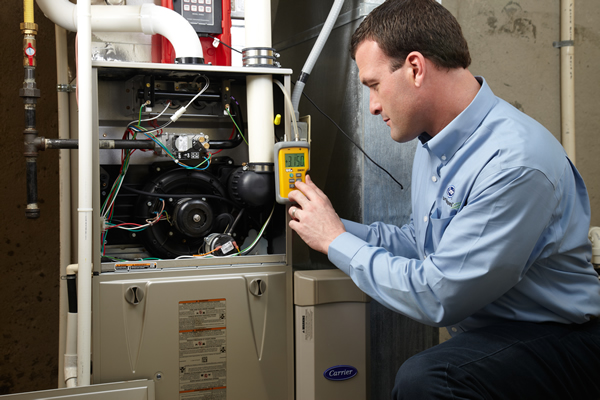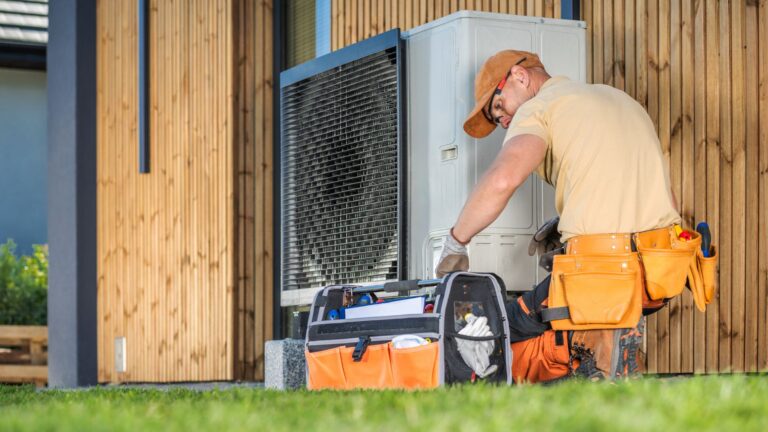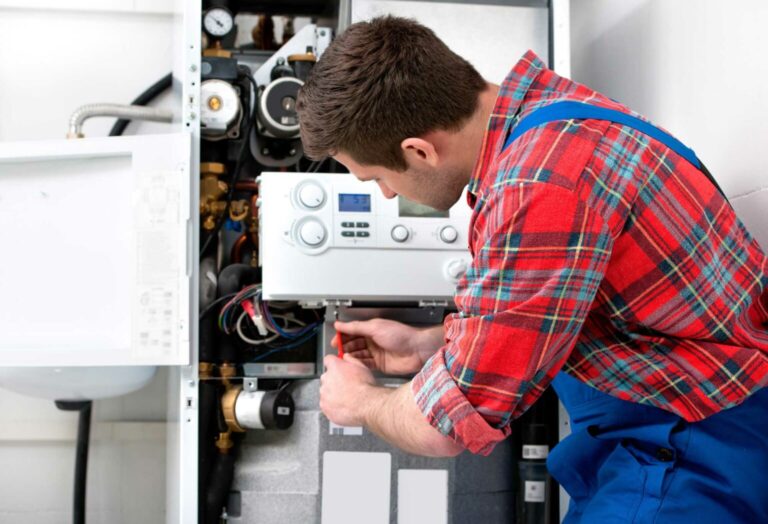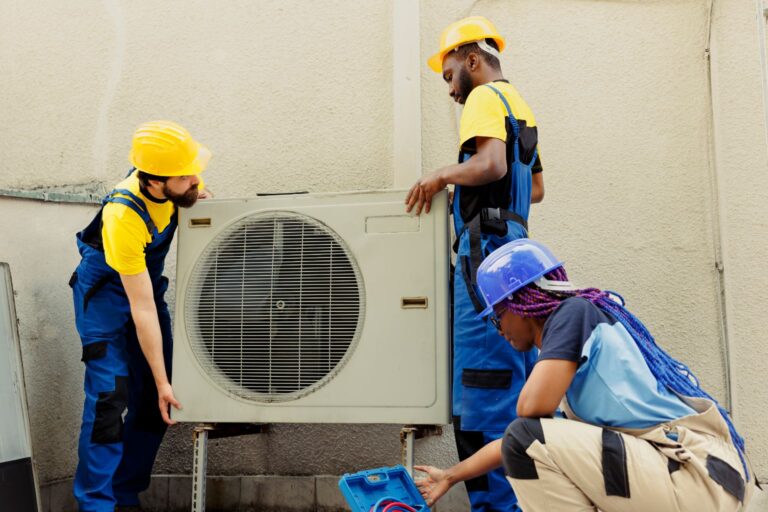You wake up in the middle of the night and notice something’s not right, the house feels colder than it should. You walk over to the thermostat, and sure enough, the furnace has shut off again. Frustrating, right?
If your furnace keeps turning off, you’re not alone. It’s one of the most common problems homeowners face during the winter. But what causes it? And more importantly, what can you do about it?
In this guide, we’ll dive into the most common reasons furnaces shut off unexpectedly, troubleshooting steps you can try, how much it costs to fix, and when it’s time to call in the pros. Let’s break it down in simple terms.
Understanding How a Furnace Works
Before we get into the problems, it helps to know the basics of how your furnace operates:
- Thermostat signals the furnace – When the temperature drops, the thermostat tells the furnace to kick on.
- Ignition starts the burners – Gas or electricity heats the furnace.
- Heat exchanger warms up – Air passes over the heated surface.
- Blower pushes air through ducts – Warm air moves throughout your home.
- Cycle ends when thermostat is satisfied – Once the right temperature is reached, the system shuts off.
If something interrupts this cycle, like a dirty filter, bad sensor, or overheating, the furnace may shut off before it should. According to the U.S. Department of Energy (DOE), even small issues in airflow or efficiency can spike energy use by 5–15%.

Common Reasons a Furnace Keeps Shutting Off
1. Dirty Air Filters
A clogged filter is the #1 reason for furnace shutdowns. When airflow is restricted, the furnace overheats and triggers a safety shut-off.
The DOE notes that dirty filters not only cause shutdowns but also increase energy consumption significantly. Changing your filter every 1–3 months can keep your system running smoothly.
2. Thermostat Issues
If your thermostat is in the wrong location (near windows, heat sources, or vents), it may send false signals to your furnace. A faulty thermostat or dead battery can also cause premature shut-offs.
Smart thermostats can help by providing more accurate readings and efficiency tracking.
3. Overheating and Short Cycling
Short cycling is when the furnace turns on and off frequently. It usually happens when:
- The furnace is oversized for your home.
- Airflow is restricted.
- The heat exchanger is damaged.
Short cycling wastes energy and puts extra wear on the system.
4. Dirty Flame Sensor
Your furnace has a flame sensor that detects whether the burner is lit. If the sensor is dirty or faulty, it shuts the system off to prevent unburned gas from entering your home.
Cleaning or replacing a flame sensor is a common fix and not overly expensive.
5. Blower Motor or Limit Switch Issues
The blower motor pushes warm air into your ducts. If it fails, the furnace overheats and shuts down. The limit switch is a safety device that kills the heat if the furnace gets too hot.
Both can cause frequent shutdowns when malfunctioning.
6. Gas Supply Problems
If gas pressure is low or the gas valve is faulty, the furnace may fail to ignite consistently, triggering automatic shut-offs. Gas issues always require professional attention for safety reasons.
7. Blocked Vents or Leaky Ductwork
Closed or blocked vents can trap heat, while duct leaks waste energy. According to the Environmental Protection Agency (EPA), leaky ducts can lose 20–30% of heated air, causing your system to overwork and shut off early.
8. Furnace Age & Wear
Most furnaces last 15–20 years. If yours is shutting down often and nearing the end of its lifespan, replacement might be the smarter, more cost-effective option. ENERGY STAR notes that modern furnaces can be up to 15% more efficient.
Troubleshooting Steps Homeowners Can Try
Before calling a professional, there are a few safe steps you can take:
- Replace the air filter.
- Check thermostat batteries and settings.
- Make sure vents are open and unblocked.
- Reset the furnace breaker if it tripped.
Important: Never attempt DIY repairs involving gas, electricity, or the internal furnace parts. Leave that to certified HVAC technicians.
The Cost of Fixing a Furnace That Keeps Shutting Off
Here’s a quick breakdown of common furnace problems and how much they cost to fix in 2025:
| Problem | Typical Repair Cost (2025) | Notes |
| Dirty Air Filter | $10 – $30 | Easy DIY fix |
| Thermostat Replacement | $150 – $500 | Smart thermostats on higher end |
| Flame Sensor Cleaning/Replacement | $75 – $300 | Common issue |
| Blower Motor Replacement | $400 – $1,200 | Major repair |
| Gas Valve Replacement | $300 – $750 | Requires professional service |
| Limit Switch Replacement | $150 – $400 | Often linked to overheating |
| New Furnace Installation | $4,500 – $9,500 | Last resort, but increases efficiency |
When to Call a Professional HVAC Technician
Some furnace problems are quick fixes, but others require expert help. Call an HVAC technician if:
- Your furnace shuts off repeatedly within minutes.
- You smell gas or hear unusual noises.
- The blower keeps running but no heat is produced.
- Repairs keep adding up and the furnace is over 15 years old.
Ignoring these signs can result in higher energy bills, safety risks, and even full system breakdowns.
Preventing Furnace Shutdowns in the Future
The best way to avoid surprise breakdowns is preventive maintenance. Here’s what works:
- Change filters regularly.
- Schedule annual tune-ups (recommended by ASHRAE and most HVAC manufacturers).
- Keep vents clear and ductwork sealed.
- Upgrade to a high-efficiency furnace when the old one nears retirement.
- Consider installing a smart thermostat for better control and monitoring.
Womack Heating and Cooling: Your Furnace Repair Experts
At Womack Heating and Cooling, we understand how frustrating it is when your furnace keeps shutting off. Our certified technicians are trained to quickly diagnose the problem, explain your options clearly, and get your home warm again, fast.
We offer affordable furnace repairs, replacements, and maintenance plans designed to fit your budget. Whether it’s a dirty sensor, a failing blower motor, or a system that’s simply too old, we’ll provide honest recommendations and reliable service.
Don’t let a faulty furnace leave you in the cold. Call (618) 234-2567 Womack Heating and Cooling today to schedule your furnace repair or tune-up and keep your home comfortable all winter long.





